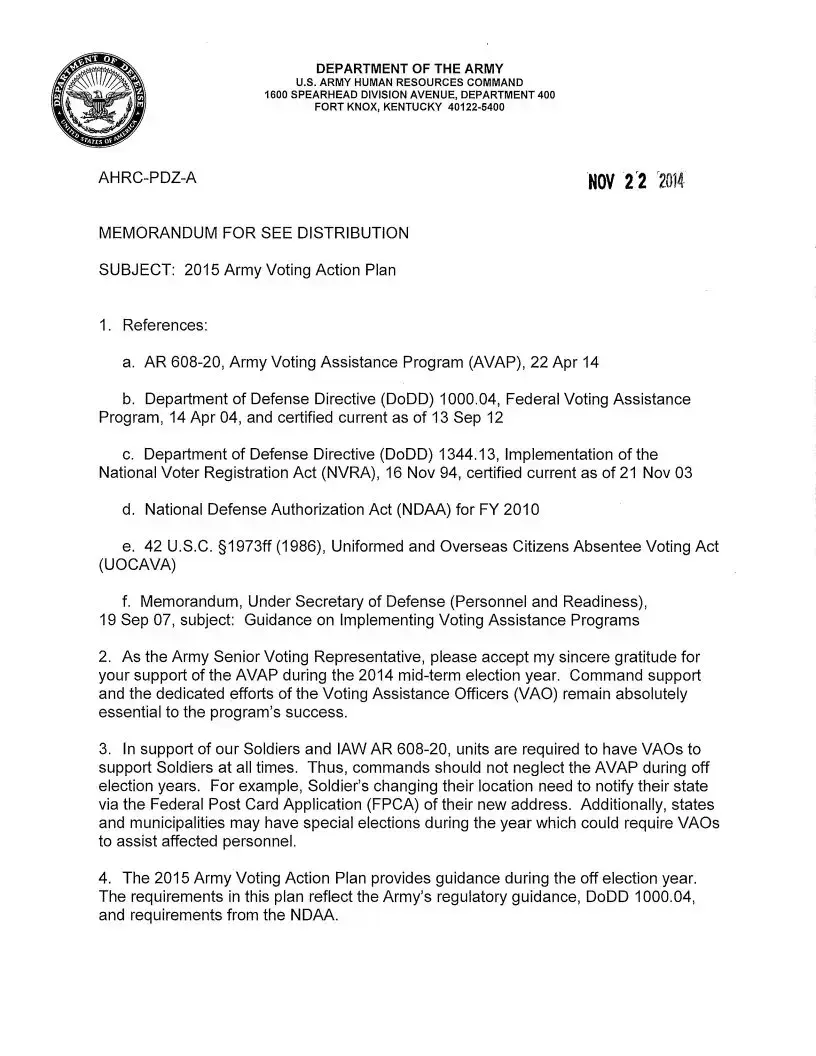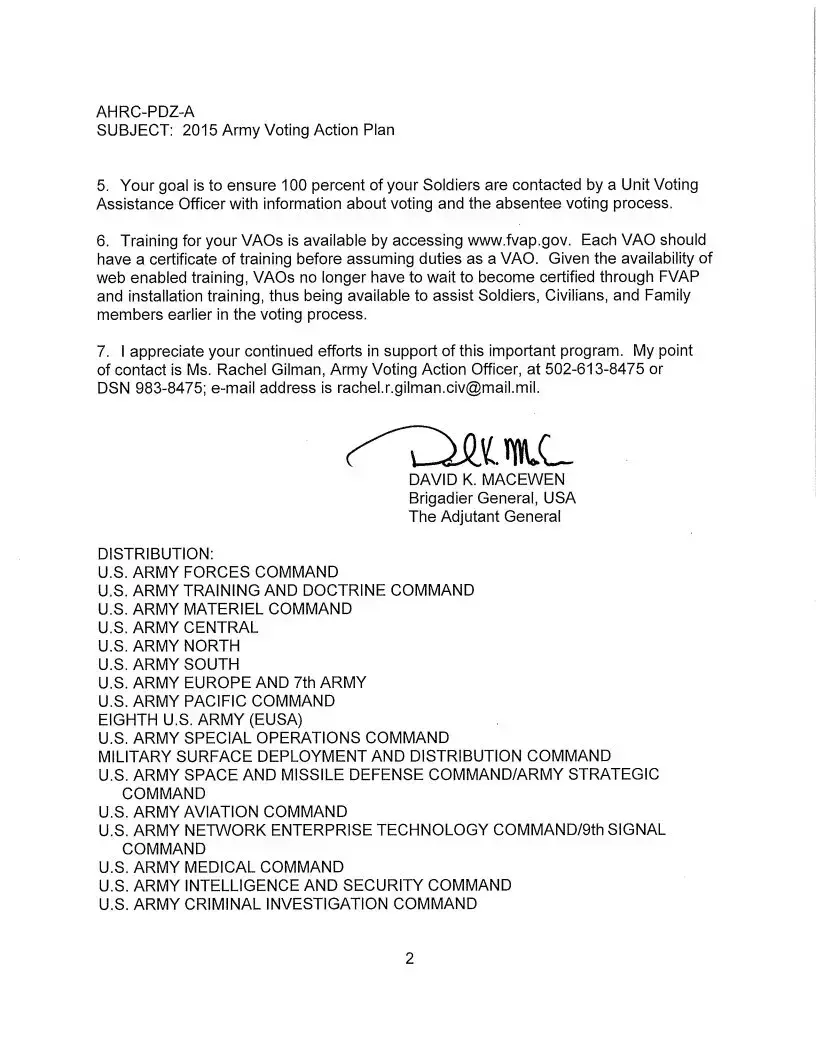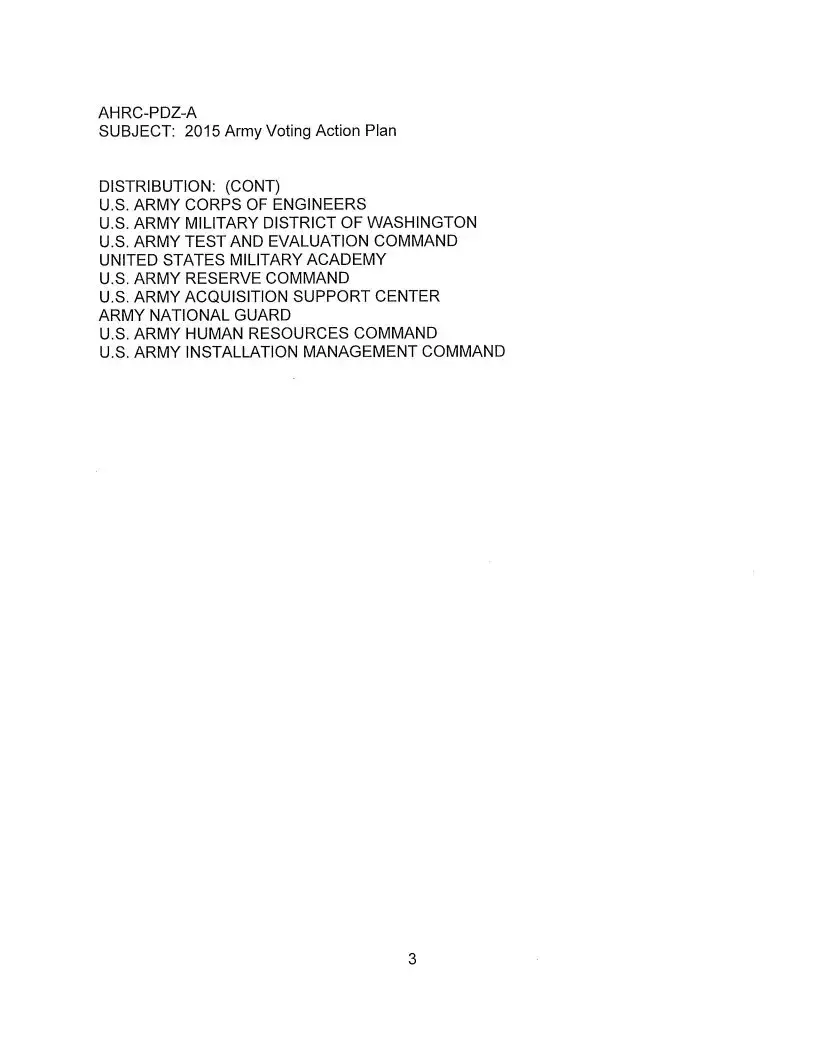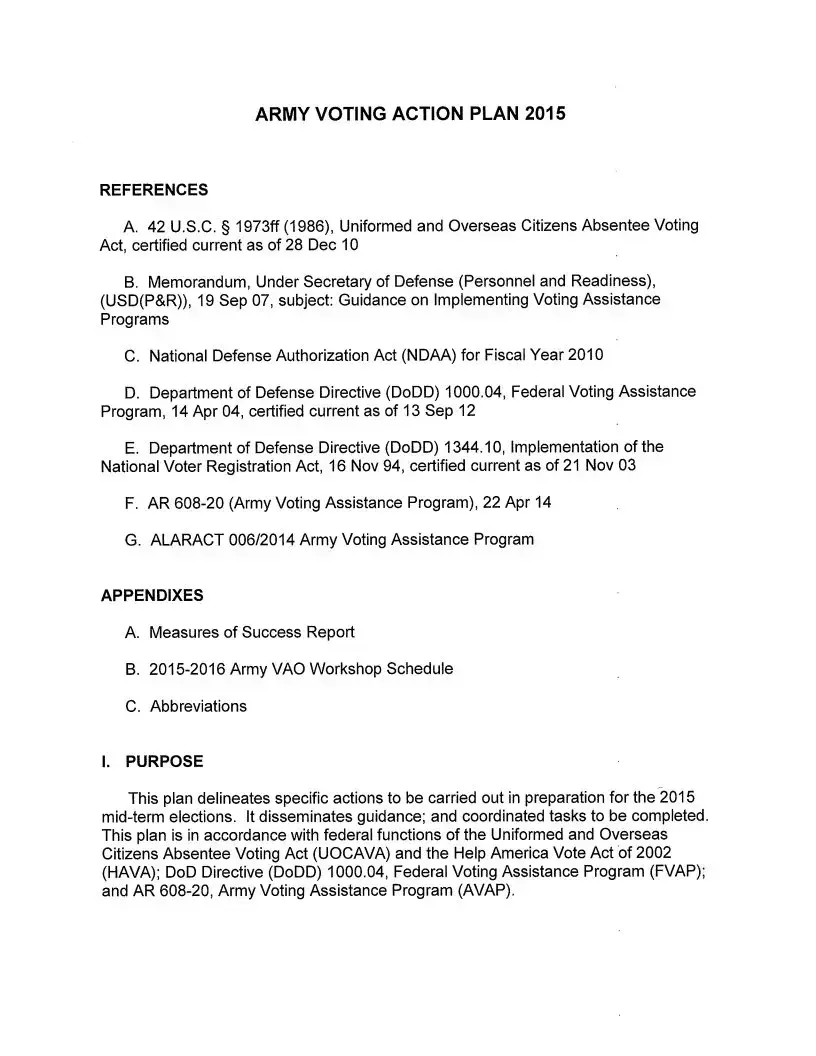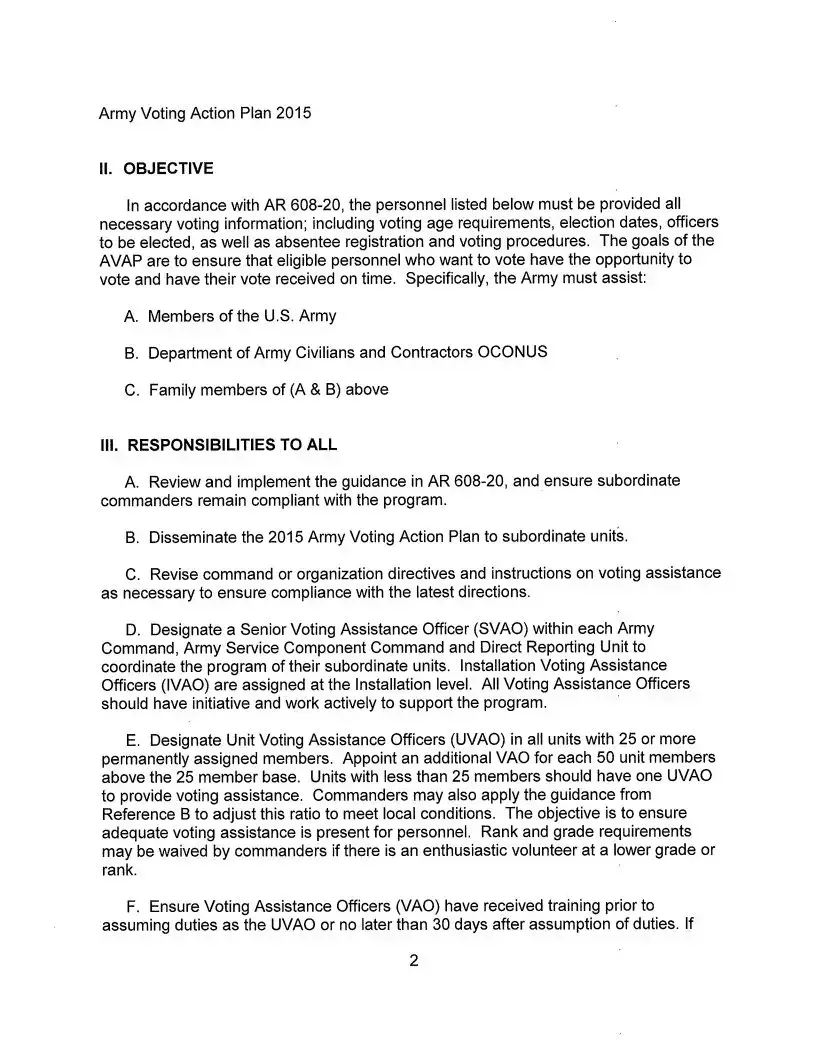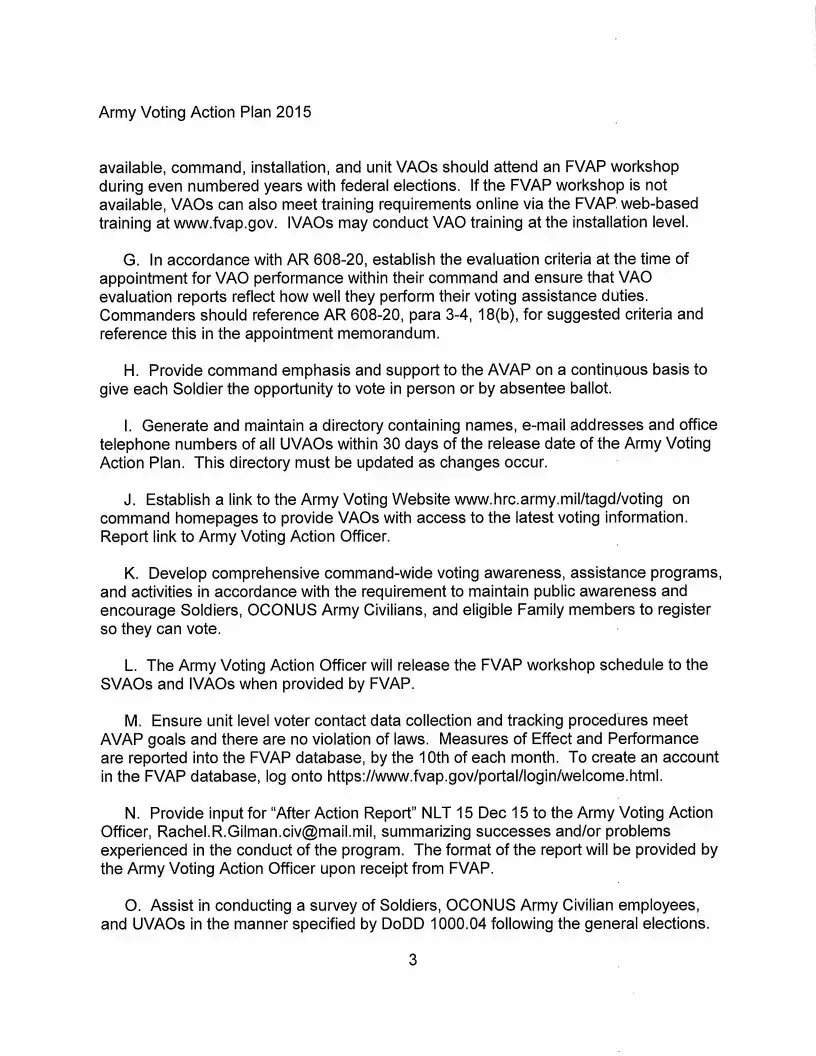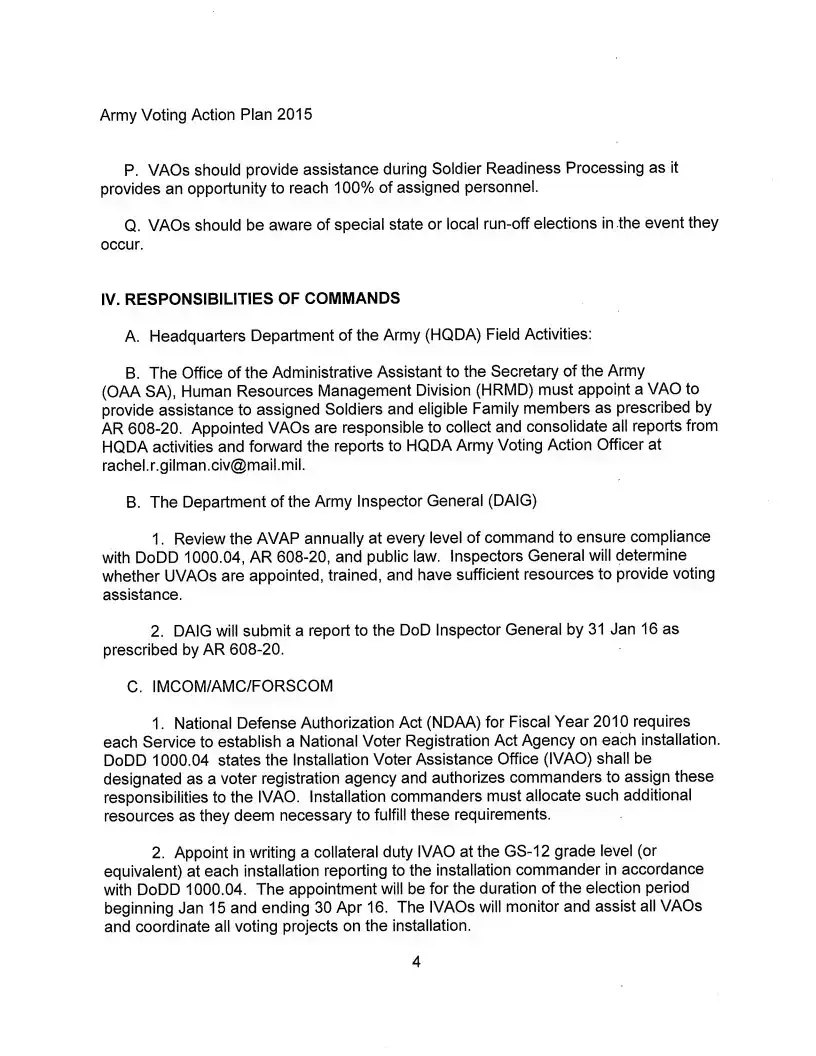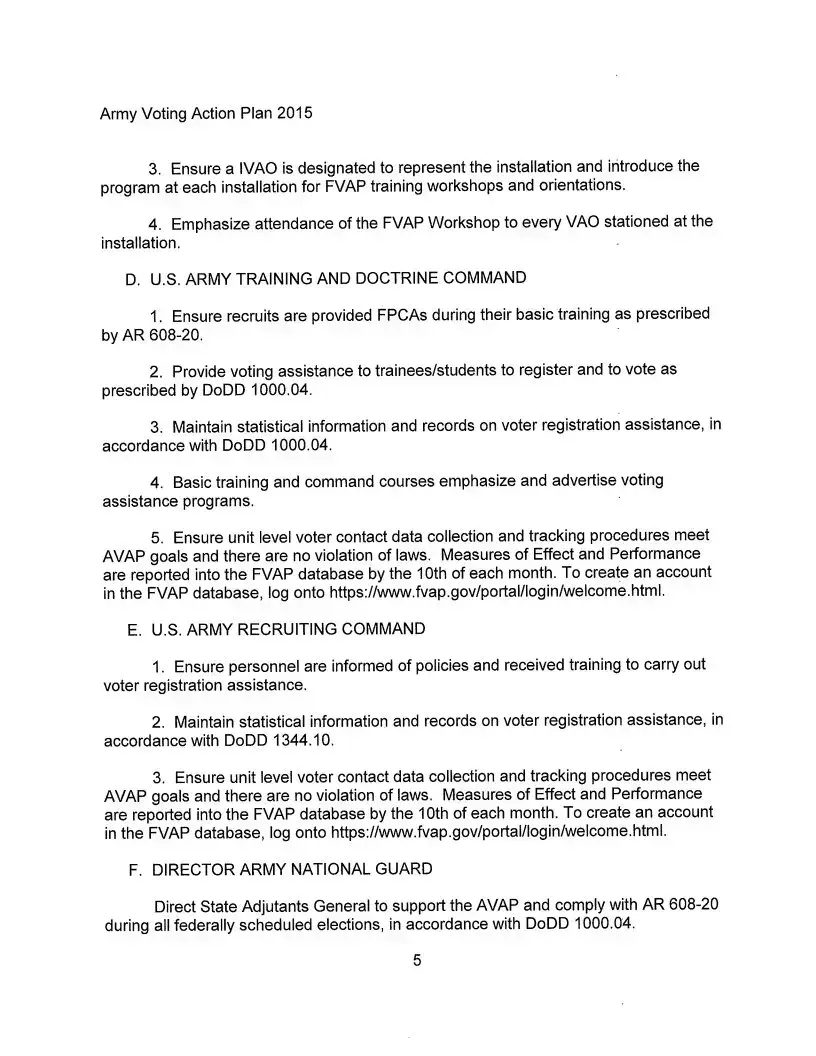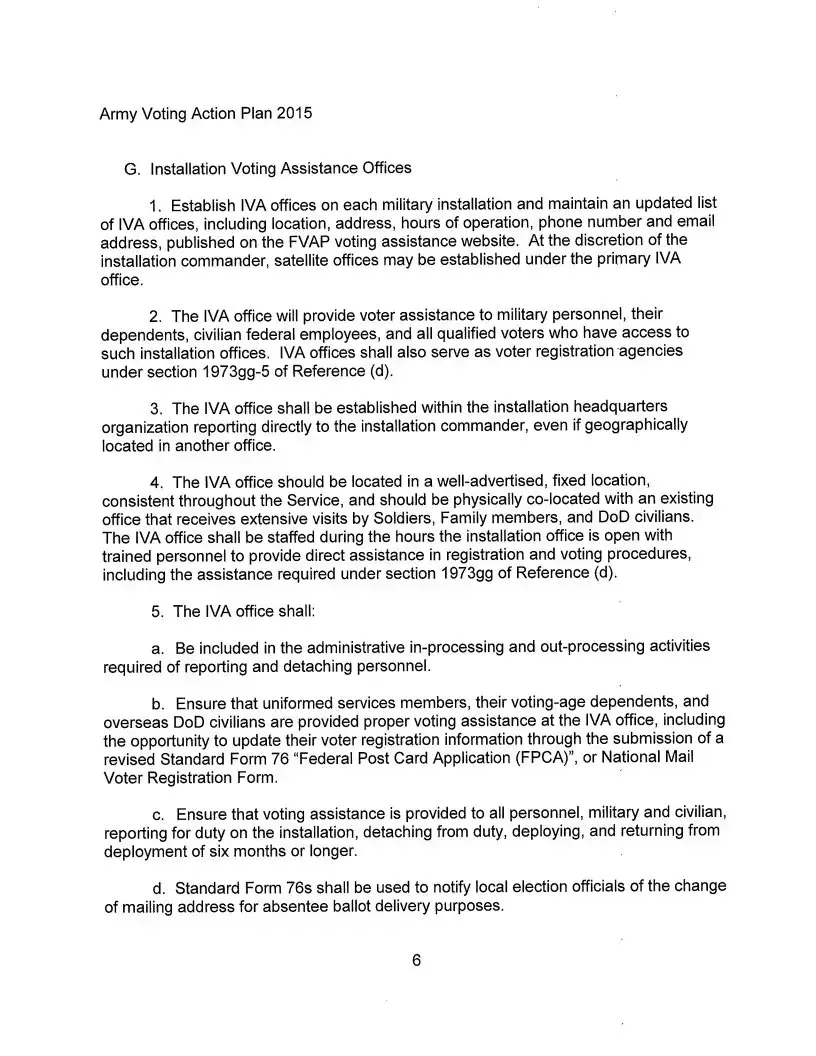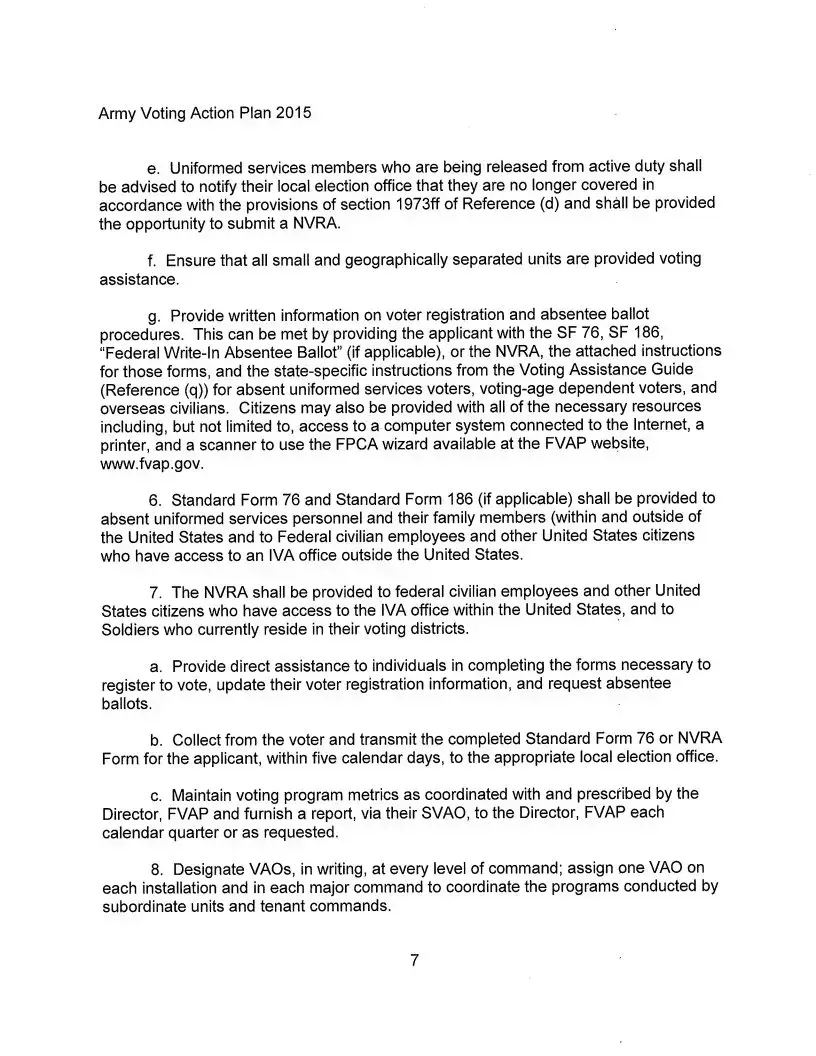In an era where the significance of voting and civic engagement is increasingly emphasized, the U.S. Army introduces its comprehensive 2015 Army Voting Action Plan. Crafted with meticulous attention to detail, the document serves as a crucial framework, guiding Army personnel through the intricacies of voting processes, especially tailored for those stationed overseas or in remote locations. With references to a variety of authoritative sources such as the Uniformed and Overseas Citizens Absentee Voting Act, Department of Defense Directives, and the National Defense Authorization Act, the plan lays out a structured approach to ensure that every soldier has the necessary resources and knowledge to participate in the democratic process. It underlines the essential roles played by Voting Assistance Officers (VAOs), underscoring the program's year-round importance, not just during election seasons, and the ongoing support required from command units. Training resources, provided through accessible web platforms, ensure that VAOs are well-prepared to guide soldiers through the absentee voting process, emphasizing the Army's commitment to fostering a culture of civic responsibility and participation among its ranks. This initiative, detailed in a memorandum from the U.S. Army Human Resources Command, reflects the Army's broader commitment to empowering its personnel, highlighting the value placed on each soldier's right to vote, regardless of their location worldwide.

